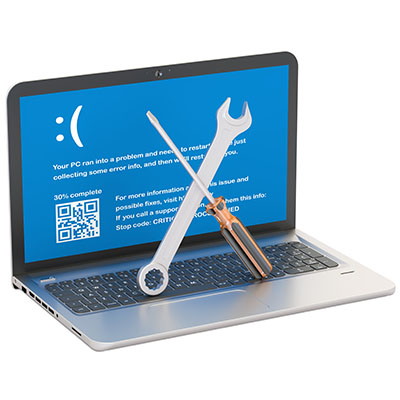When you think of downtime, you probably think about the power or your Internet connection going out and leaving you unable to do work. Unfortunately, these are anecdotes that seem benign, but are actually extraordinarily costly. When interruptions to your business’ computing infrastructure are constantly hindering productivity, you need to come up with a solution.
Computers allow businesses to do so much, but eventually a time comes to purchase new hardware. Thankfully, you can stave off this need pretty well by simply taking care of your existing technology. Here are some tips you can implement to make sure that your computer lasts as long as possible before it kicks the bucket.
The software you choose to use for your business largely defines the capabilities of it. When it comes to communications there are some very standard options that you probably already have and then there are some more innovative options that can have significant benefits for your staff. Let’s take a look at some of the standard communications options a business might use and how they can use technology to crank it up a bit.
Discarded electronics, including the hardware that so many businesses cycle through, are a big problem—and not one that we can ignore for a variety of reasons. Let’s explore the issues surrounding e-waste, as well as what can be done to reduce it.
Microsoft Teams is a video communication and collaboration platform that your organization can use to great success, but it helps to have a couple of pointers so you can make the most out of the software. Here are five ways you can maximize the value you get out of your Microsoft Teams software.
Typing on your keyboard is something that you do every day, but sometimes you just don’t want to do it. You can give your hands a break and use Microsoft Word’s dictation feature; this lets you use your voice to write in the software. Let’s go over how you might use the feature on a desktop, web browser, or mobile device.
It might be an understatement to suggest that things don’t always go smoothly in business. The truth is that when one problem is solved, another is often created. This is why we lean on our technology. These “solutions” are intended to fix many of the speedbumps, but that doesn’t mean that choosing, deploying, and supporting these systems don’t come with some problems as well. Today, we look at three reasons an IT project could fail.
With many businesses’ increased reliance on their information systems and other IT, they need to do everything they can to keep those systems up and running and secure. This not only includes rolling out security systems that support that goal, it also demands they take the action necessary to keep these systems secure. Let’s look at four things you need to do to keep your business’ IT as secure as possible.
There is a microprocessor shortage influencing all kinds of businesses around the globe, and it’s only going to get worse following the Russian invasion of Ukraine. Ukraine produces somewhere between 45 and 54 percent of the world’s semiconductor-grade neon, something which is absolutely crucial to the creation of microchips. The invasion has put a halt to neon-refinement companies Ingas and Cryoin, and as you can imagine, this puts a massive strain on an already struggling supply chain.
No Business is Exempt; It’s Time to Take IT Security Seriously Is Your Data Safe? Consider how much of your business operations rely on computers – you store your business and customer data digitally, including financial accounts, personal information, and other specifics. Unfortunately, while this data is clearly invaluable to your business, do you know who else would find your data valuable?










